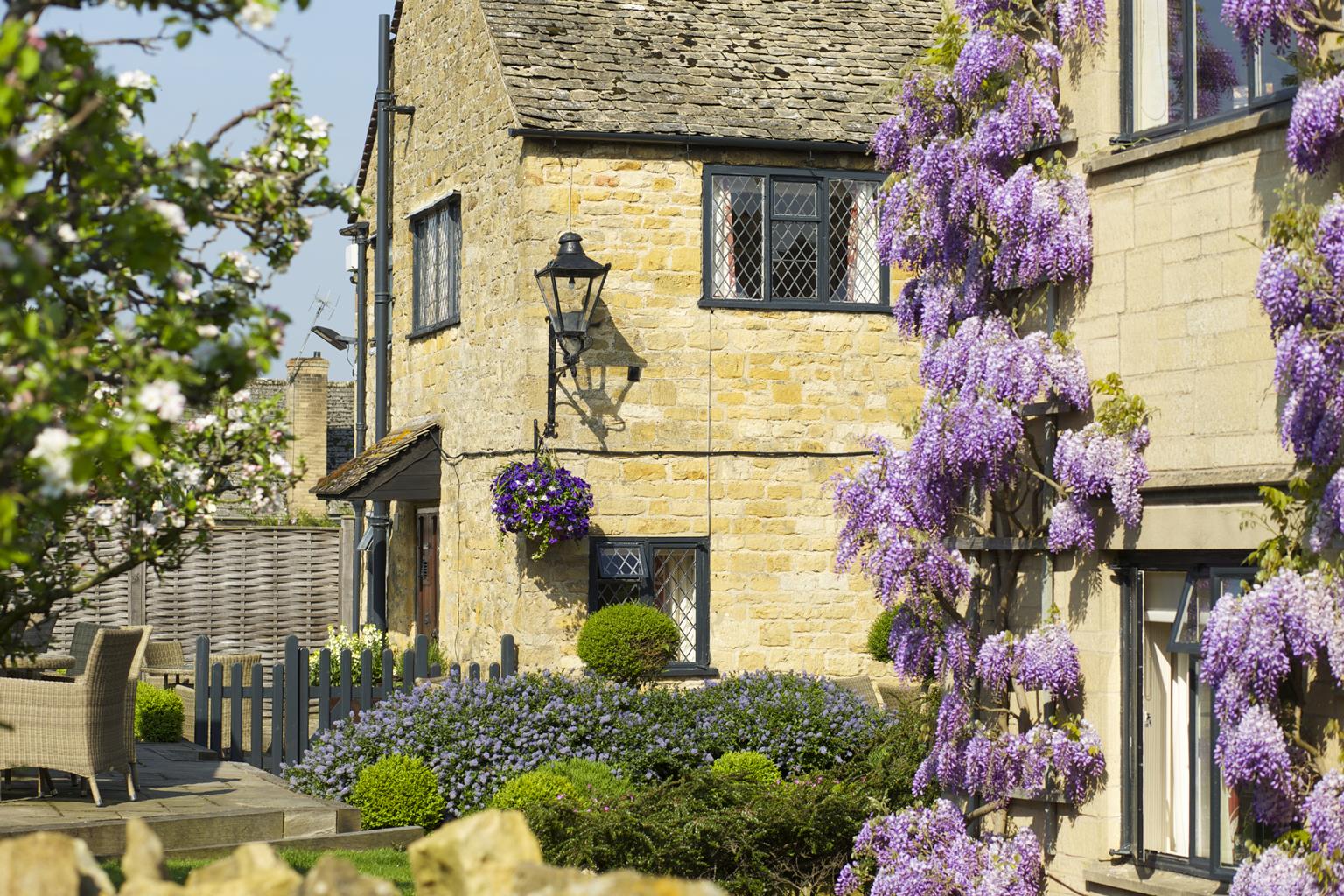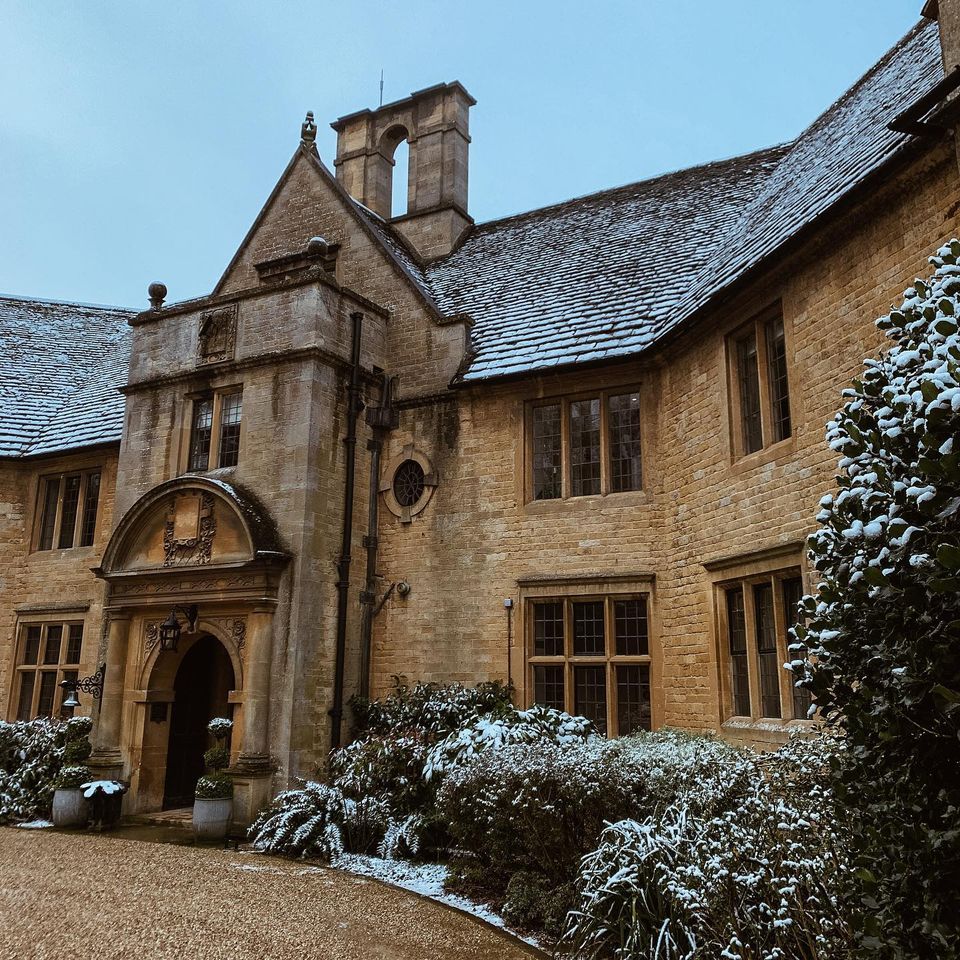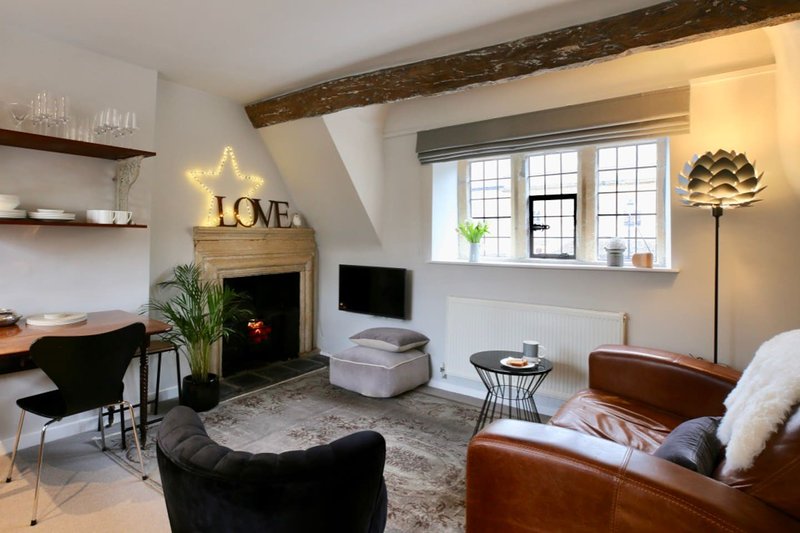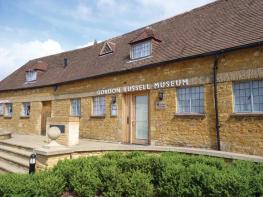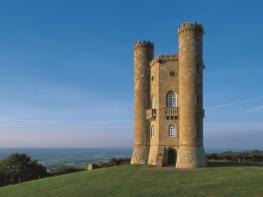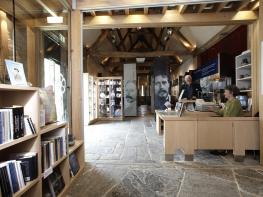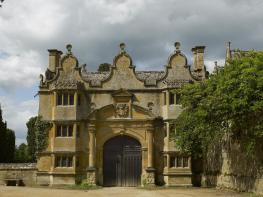Located in the heart of Broadway, this historic property has been welcoming guests for over 600…
Cotswold Way: Broadway to Winchcombe

11.9 miles (19.3kms)
About the walk
The prime season for tourism in the Cotswolds is of course the summer, though the walker following the limestone ridges can rise above the parking problems and crawling traffic which besets the area. With so much on offer, the best time to walk the Cotswold Way may be in spring or autumn, when tourism is less intrusive, many of the attractions are still open to the public, and the beech woodlands that form an important part of the route are at their best. There is plenty of accommodation in the towns and villages along the way, but campsites are few and far between.
With so many distractions, it is impossible to specify how long the route will take to walk, and careful planning is necessary to fit in with opening times of places to visit. Generally, the going is moderate, though there may be quite a bit of mud in wet weather and a certain amount of hill-climbing in the area around Cheltenham. Walkers are frequently surprised that the height gain over the whole route is equal to three times the height of Snowdon.
Stanton, the only sizeable settlement on The Cotswold Way between Broadway and Winchcombe, has splendid Cotswold buildings lining its main street, without the tourist trappings and massed cars that spoil Broadway and Chipping Campden. Most of its buildings were built in the 17th century and restored to their current condition by architectural enthusiast Sir Philip Stott in the early 20th century. It is, arguably, one of the prettiest villages in the Cotswolds.
Beyond Stanton, the route passes through the large estate belonging to Stanway House. The house is a sumptuous Jacobean masterpiece, full of knobs and furbelows. Britain's tallest fountain (and the highest gravity-fed fountain in the world at 300 feet) erupts from the water garden. J.M. Barrie, author of Peter Pan, was a regular visitor to the house in the 1920s. He donated the village cricket pavilion, which sits on staddlestones. He and many of his literary friends (including Arthur Conan Doyle, H.G. Wells and A.A. Milne) would often play cricket here, under the team name, The Allahakbarries.
Walk directions
The Cotswold Way continues from Broadway near its oldest house, the Abbot’s Grange, which is sited below the green. The route turns off on to a footpath opposite the church. Crossing the lane, the route climbs through the woods of Broadway Coppice, passing along the side of a field and crossing the Worcester/ Gloucestershire border to go through a complicated series of gates and stiles. A long, straight track leads on above Burnhill, with views to Broadway Tower. This leads to Manor Farm.
From here, the route follows a sometimes muddy track that doubles back to the right, before bearing left on a much firmer track by the side of woods and on along the ridge past solitary hilltop farm buildings. A short way on it passes a disused quarry on the left, and then comes to a crossroads, with the Cotswold Way signpost by a cattle grid. Here you may wish to divert to Snowshill, a quaint hamlet with an interesting manor house in the valley.
To continue along the Cotswold Way, follow the track straight on along towards Shenberrow Farm, where the hill fort at the top of the hill is sited in what must have been an impregnable position, though little remains of it today. From the farmhouse, a track leads downhill through woods. It bears left on to a narrow path and passes close by Stanton’s small reservoir before entering the village.
From Stanton the route crosses fields, before entering the fine parkland of Stanway House. It joins a lane by a most unusual thatched cricket pavilion, standing on staddle stones. The grand stately home, built by Sir Paul Tracey in the early 17th century, is passed immediately on the left. Notice its magnificent south gateway in the style of Inigo Jones, just past the much-restored 12th-century church. Beyond the south gateway the route bears left on a footpath past estate cottages, going through a wooden gate with a carved duck’s head.
The path leads on across the B4077, with the Cotswold Way taking an indirect route to Hailes Abbey in order to visit Beckbury Camp. At the small hamlet of Wood Stanway it bears left up the hillside above sheep pens, crossing fields, towards the imposing farmhouse at Lower Coscombe. Bear right, uphill, before the farm and then follow the contours of the hillside to the road junction at Stumps Cross. From here the route leads via a track to the imposing hill fort of Beckbury Camp.
The walker should go steeply down the hill by the stone pillar, and follow the path across level ground beneath the fort’s ramparts, joining a track and turning downhill towards Hailes Abbey. This is a good spot, by the church, to stop and rest awhile, before the route turns left across a field, giving fine views of the abbey ruins and crossing fields towards Winchcombe along the Pilgrims’ Way. A track leads down to join Puck Pit Lane, entering Winchcombe by the A46. An optional footpath route, which avoids the main road, follows the east side of the River Isbourne to enter Winchcombe by Castle Street.
Additional information
Bridleways, field paths and minor roads
Idyllic Cotswold villages, meadows, woodlands and escarpment edges with significant views
Lots of off-lead opportunities. On-lead around livestock
Church Close Car Park, Broadway or Back Lane Car Park. Winchcombe
Church Close Car Park in Broadway; Back Lane Car Park in Winchcombe
WALKING IN SAFETY
Read our tips to look after yourself and the environment when following this walk.
Find out more
Also in the area
About the area
Discover
Nearby stays
Restaurants and Pubs
Nearby experiences
Recommended things to do
Why choose Rated Trips?
Your trusted guide to rated places across the UK
The best coverage
Discover more than 15,000 professionally rated places to stay, eat and visit from across the UK and Ireland.
Quality assured
Choose a place to stay safe in the knowledge that it has been expertly assessed by trained assessors.
Plan your next trip
Search by location or the type of place you're visiting to find your next ideal holiday experience.
Travel inspiration
Read our articles, city guides and recommended things to do for inspiration. We're here to help you explore the UK.


